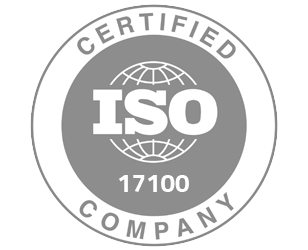
Top Languages Every Business Should Consider for International Success
Expanding your business into international markets requires more than just a great product or service, it demands clear and accurate communication. With globalization driving cross-border commerce, translating your content into the right languages can significantly impact your success. But which languages should you prioritize? In this article, we explore the top 10 languages businesses should consider for translation, helping you reach wider audiences and maximize growth opportunities.
The 10 Most Important Languages for Global Business Expansion
A well-planned language strategy allows companies to expand into high-growth markets, build trust with international audiences, and drive sales. Below are the ten most important languages businesses should consider translating their content into for maximum global reach.
1. English
English remains the dominant language in international business, technology, and trade. It is the primary language of multinational corporations, scientific research, and online content, with over 60% of the internet’s top websites available in English. However, while English is widely spoken as a second language, businesses should not rely on English-only content to connect with global audiences. Companies expanding internationally should localize content into additional languages to ensure effective engagement with non-English-speaking consumers.
2. Spanish
With over 500 million native speakers, Spanish is the second most spoken language by native speakers worldwide. It is the official language in 21 countries, including major economies such as Mexico, Spain, Argentina, and Colombia. Additionally, the U.S. has a rapidly growing Spanish-speaking population, making Spanish translation essential for businesses in e-commerce, healthcare, banking, and media. Companies looking to expand into Latin American markets should prioritize Spanish localization to build strong customer relationships and improve brand recognition.
3. Chinese (Mandarin)
China has the world’s second-largest economy and the largest e-commerce market, with over 900 million internet users. Mandarin Chinese is spoken by more than 1.1 billion people, making it essential for businesses targeting Chinese consumers. Companies looking to enter China’s lucrative e-commerce, fintech, and manufacturing sectors need professionally translated content for websites, product descriptions, and marketing campaigns. Additionally, platforms like WeChat and Alibaba require Mandarin-language content to effectively engage users.
4. Arabic
Arabic is the fifth most spoken language in the world, with over 310 million native speakers across the Middle East and North Africa (MENA). The region includes major economies such as Saudi Arabia, the United Arab Emirates (UAE), and Egypt, where digital transformation is driving rapid e-commerce growth. Arabic is also the official language of Islam, making it crucial for businesses in halal industries, tourism, and finance. Given the unique cultural and linguistic nuances of Arabic-speaking markets, companies must ensure that their content is not just translated but also culturally adapted.
5. French
French is an official language in over 30 countries, including France, Canada, Belgium, Switzerland, and several fast-growing African economies such as Senegal, Ivory Coast, and the Democratic Republic of the Congo. With 320 million speakers globally, French is essential for businesses expanding into Europe and Africa. The African market, in particular, is experiencing rapid growth in digital banking, telecommunications, and e-commerce. Companies targeting Francophone consumers should prioritize high-quality French translations to improve accessibility and customer engagement.
6. Portuguese
Portuguese is the official language of Brazil, the largest economy in South America, as well as Portugal, Angola, and Mozambique. With over 260 million speakers, Portuguese is crucial for businesses looking to expand in these markets. Brazil has a booming digital economy, particularly in fintech, e-commerce, and mobile gaming. Companies entering these industries must ensure their websites, mobile apps, and customer support are available in Portuguese to maximize their reach.
7. Russian
Russian is spoken by over 260 million people, making it the most widely spoken language in Eastern Europe and Central Asia. It remains a key language for business in Russia, Ukraine, Kazakhstan, and other former Soviet states. Russia has a strong presence in energy, technology, and e-commerce, with platforms like Yandex and VKontakte dominating the digital landscape. Companies looking to expand into Russian-speaking markets should translate their content into Russian to gain credibility and comply with local regulations.
8. German
German is spoken by over 100 million people and is the most widely spoken native language in the European Union. Germany is Europe’s largest economy and a global leader in industries such as automotive, engineering, pharmaceuticals, and finance. German consumers value precision and high-quality communication, making accurate translations essential for building trust. Companies targeting German-speaking markets—including Austria and Switzerland—must provide localized websites, legal documents, and product information to effectively engage customers.
9. Japanese
Japan has the third-largest economy in the world and is a leader in technology, robotics, and automotive manufacturing. With over 125 million speakers, Japanese is crucial for businesses entering the Japanese market. Japanese consumers prefer localized content, and companies must ensure that their branding, product descriptions, and customer service materials are translated with cultural sensitivity. E-commerce and digital gaming companies, in particular, must invest in high-quality Japanese translations to compete effectively.
10. Hindi
India is home to over 1.4 billion people, and Hindi is the most widely spoken language in the country, with over 600 million speakers. While English is used in business and government, Hindi is essential for companies targeting mass-market consumers in India’s booming e-commerce, mobile banking, and entertainment industries. India’s digital economy is expected to grow significantly, with more consumers preferring content in their native languages. Businesses that translate content into Hindi—and other regional languages such as Bengali and Tamil—will have a competitive edge in reaching Indian customers.
How to Get a Free Quote for Your Translation Needs
Getting a free quote for your translation needs with PoliLingua is quick and hassle-free. Our user-friendly process allows you to submit your project details online in just a few steps. Whether you need marketing translation, website localization, or industry-specific language services, simply upload your files or describe your requirements through our quote request form. Our team will assess your project and provide a transparent, no-obligation estimate tailored to your needs. With our expertise in over 200 languages, you can be confident in receiving high-quality, cost-effective translation solutions designed for your business requirements.







